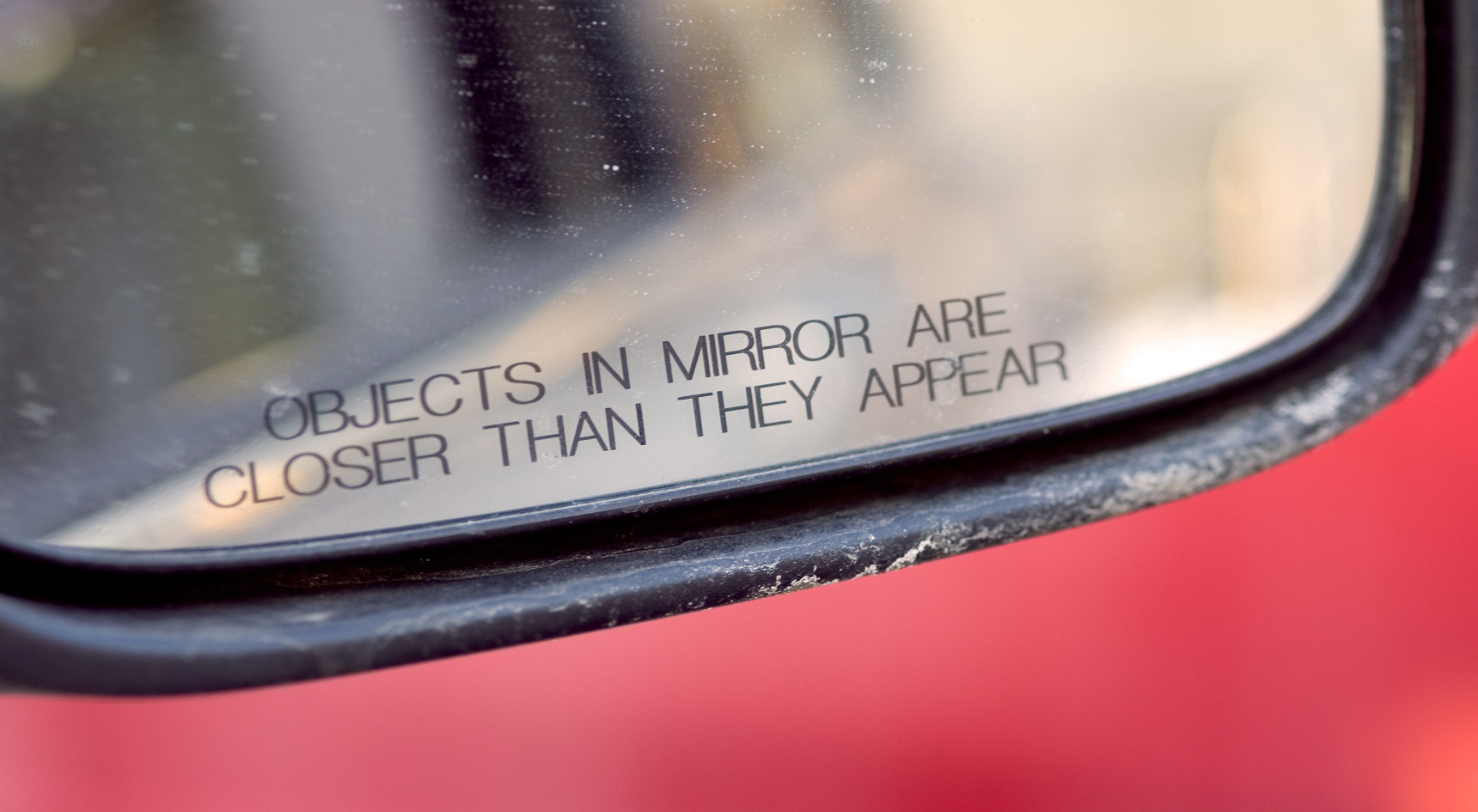Why objects in mirrors are closer than they appear

‘Objects in mirror are closer than they appear’. No, we’re not referring to the words you might see before entering a mind-boggling mirror maze.
It’s the safety warning you’ve probably noticed on the side mirrors of some cars. So, what does it mean and how does it impact you when you’re behind the wheel? We’ve pulled out the magnifying glass for a closer look at this unusual car design feature.
Mirror, mirror on the… side of my car
Snow White’s mirror may have told the truth, but side mirrors fitted on some cars aren’t as honest.
The reason objects appear further away than they are is due to the mirror’s shape. Curved – also known as convex – mirrors distort the size of objects and alter the perception of how close or far objects are from the car. That said, it also gives drivers a larger view of their surroundings.
Convex mirrors aren’t just used by car manufacturers. Eyeglasses often have these lenses because they help magnify objects and reflect sunlight away from a person’s eyes. You may also see these mirrors at ATMs as a safety precaution so people can see what’s happening behind them.
According to RAA Senior Manager for Safety and Infrastructure Charles Mountain, convex mirrors were originally only fitted to the passenger’s side of the car.
“They were first used to give drivers a wider field of vision from the passenger’s side, so it was possible to see relatively close objects to the side of the vehicle,” Mr Mountain says.
In recent years, convex side-mirrors have been fitted to both sides of the vehicle as a safety feature.
That said, there’s no legal requirement under the Australian Design Rules that state a vehicle’s mirrors must be convex. Some car manufacturers still fit normal glass.
Is flat or curved safer?
There are pros and cons to both types of mirrors, explains RAA Car Advice Manager Andrew Clark.
While flat mirrored surfaces help generate an accurate reflection of a driver’s surroundings, curved surfaces do a much better job of minimising blind spots.
However, there are risks to viewing the road through convex mirrors where objects seem farther away than they are.
“A driver might make a manoeuvre, such as a lane change, assuming an adjacent vehicle is a safe distance behind when it’s actually quite a bit closer,” Mr Clark says.
On reflection
Both flat and convex mirrors can be installed by reputable glass repairers. But, if your car is already fitted with the latter, it might be better to keep it that way.
“It comes down to personal preference, but our advice is try to get used to convex mirrors, as they can give drivers a buffer when it comes to staying a safe distance from other vehicles or objects,” Mr Clark says.
Regardless of how you’re viewing the road, getting the position of your mirrors right is the first step to safe driving. Mirrors should be set up so that the driver can see the vehicle’s rear door handle, as this gives a maximum field of vision and acts as a reference point so they can see any objects behind them, including other vehicles.
Getting the angle right is important because side mirrors set too far inwards can mean you’re seeing too much of your car and not enough of what’s happening around you.
Final word
It’s important not to rely too heavily on your car’s mirrors when changing lanes or checking what’s happening behind your vehicle.
“The best way to see the true distance of vehicles or other objects behind you is to always check your blind spot by turning your head and looking over your shoulder,” Mr Clark says.
DO YOU NEED CAR ADVICE?
RAA members can call our free Car Advice Service for answers to their car questions.
Or call 8202 4689


